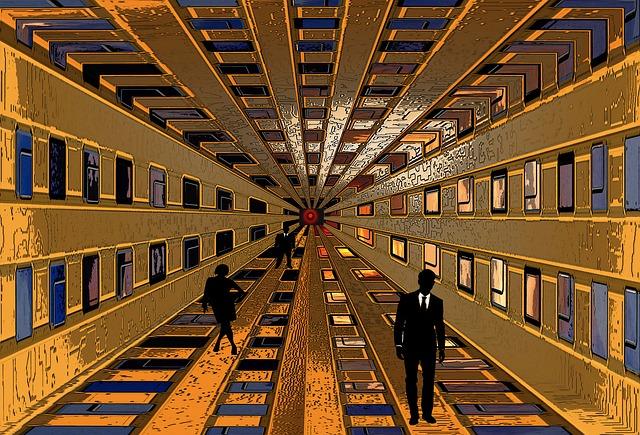What Causes Turbinate Hypertrophy? Nasal Health Insights

Do you often find yourself struggling with nasal congestion, difficulty breathing, and frequent headaches? If so, you may be experiencing a condition known as turbinate hypertrophy. Wondering what causes this uncomfortable and disruptive issue? In this article, we will delve into the factors behind turbinate hypertrophy, providing you with insightful knowledge about nasal health. So, grab a cup of tea, sit back, and let’s explore the world of turbinate hypertrophy together.
Contents
- 1. Understanding Turbinate Hypertrophy: An Overview of Nasal Health Issues
- 2. Factors Contributing to Turbinate Hypertrophy: Uncovering the Root Causes
- 3. Environmental Triggers and Allergies: The Impact on Turbinate Health
- 4. Chronic Sinusitis and Turbinate Hypertrophy: A Complex Relationship
- 5. Hormonal Imbalances and Turbinate Enlargement: The Hidden Connection
- 6. 5 Lifestyle Habits for Maintaining Optimal Nasal Health
- 7. Exploring Treatment Options for Turbinate Hypertrophy: From Medications to Surgery
- 8. Natural Remedies to Alleviate Turbinate Hypertrophy Symptoms
- 9. The Role of Diet and Nutrition in Promoting Nasal Health
- 10. Preventive Measures for Turbinate Hypertrophy: Proactive Steps to Take Today
1. Understanding Turbinate Hypertrophy: An Overview of Nasal Health Issues
Turbinate hypertrophy, a common nasal health issue, can cause discomfort and interfere with daily activities. It refers to the swelling or enlargement of the turbinates, which are structures inside the nose responsible for filtering, humidifying, and warming the air we breathe. When these turbinates become hypertrophied, they can obstruct the nasal passages and lead to symptoms like difficulty breathing, congestion, snoring, and even sleep disturbances.
So, what causes turbinate hypertrophy? Several factors contribute to this condition, including:
- Allergies: Allergic reactions to environmental factors such as dust mites, pollen, or pet dander can trigger an inflammatory response in the nasal tissues, leading to turbinate hypertrophy.
- Chronic sinusitis: Long-term inflammation of the sinuses can result in the enlargement of the turbinates.
- Hormonal imbalances: Fluctuations in hormone levels, particularly during pregnancy or menopause, can cause turbinate hypertrophy.
- Anatomical variations: Some individuals naturally have larger turbinates, making them more prone to hypertrophy.
Proper diagnosis and understanding of the underlying causes of turbinate hypertrophy are crucial for effective treatment. A comprehensive evaluation by an otolaryngologist is recommended to determine the most appropriate course of action, which may include medical management, lifestyle changes, or in severe cases, surgical intervention.
2. Factors Contributing to Turbinate Hypertrophy: Uncovering the Root Causes
Turbinate hypertrophy, a condition characterized by the enlargement of nasal turbinates, can cause significant discomfort and affect one’s quality of life. Understanding the factors that contribute to this condition is crucial in order to address the root causes and find effective treatment options.
Several factors have been identified that can lead to turbinate hypertrophy:
- Allergies: Allergic reactions, such as hay fever or dust mite allergies, can trigger the release of histamines, causing nasal congestion and inflammation. This chronic inflammation can eventually lead to turbinate hypertrophy.
- Chronic Sinusitis: Sinus infections or inflammation that persist for an extended period of time can result in turbinate hypertrophy. The constant irritation and swelling of the nasal passages can cause the turbinate tissues to become enlarged.
- Hormonal Changes: Fluctuations in hormone levels, particularly during pregnancy or with the use of certain medications, can contribute to turbinate hypertrophy. These hormonal changes can affect the blood flow and tissue growth in the nasal cavities.
- Anatomical Factors: Some individuals may have naturally larger turbinates or a deviated septum, which can predispose them to turbinate hypertrophy. These structural abnormalities can obstruct the airflow and cause the turbinates to enlarge in an attempt to compensate.
Identifying and addressing these underlying factors is essential in managing turbinate hypertrophy. Through a combination of medical treatments, lifestyle modifications, and proactive nasal health management, it is possible to alleviate symptoms and improve overall nasal health.
| Factor | Description |
|---|---|
| Allergies | Allergic reactions can lead to chronic inflammation and swelling of nasal passages, resulting in turbinate hypertrophy. |
| Chronic Sinusitis | Long-lasting sinus infections or inflammation can cause the turbinates to become enlarged due to constant irritation and swelling. |
| Hormonal Changes | Fluctuations in hormone levels, such as during pregnancy or with certain medications, can impact blood flow and tissue growth in the nasal cavities, contributing to turbinate hypertrophy. |
| Anatomical Factors | Naturally larger turbinates or a deviated septum can obstruct airflow, leading to compensatory enlargement of the turbinates. |
3. Environmental Triggers and Allergies: The Impact on Turbinate Health
Environmental triggers are known to have a significant impact on the health of our turbinates. These tiny, shelf-like structures in our nose play a crucial role in filtering, humidifying, and warming the air we breathe. However, when exposed to certain allergens and irritants, they can become inflamed, leading to a condition called turbinate hypertrophy.
Common environmental triggers that can affect turbinate health include:
1. Allergens: Pollen, dust mites, pet dander, and mold are some of the most common allergens that can cause turbinate inflammation. If you have allergies, it’s important to identify and minimize exposure to these triggers to prevent worsening of turbinate hypertrophy symptoms.
2. Air pollution: Outdoor air pollution, such as smoke, smog, and chemical fumes, can irritate the nasal passages and lead to turbinate swelling. Indoor air pollution, including cigarette smoke, cleaning products, and volatile organic compounds (VOCs), can also contribute to turbinate hypertrophy.
3. Climate factors: Extreme weather conditions, such as cold, dry air or high humidity, can have a detrimental effect on turbinate health. Cold and dry air can cause the nasal tissues to dry out and worsen inflammation, while high humidity can promote the growth of mold and other allergens.
To alleviate the impact of these environmental triggers on turbinate health, it’s essential to take preventive measures. This can include using air purifiers or filters in your home, avoiding outdoor activities during peak allergen seasons, keeping your living space clean and free from dust, and maintaining optimal humidity levels. Additionally, seeking medical advice from an ENT specialist can help identify specific triggers and provide effective treatment options, such as nasal sprays or allergy immunotherapy, to manage turbinate hypertrophy. Remember, taking proactive steps to protect your turbinates can greatly improve your overall nasal health.
4. Chronic Sinusitis and Turbinate Hypertrophy: A Complex Relationship
Chronic sinusitis and turbinate hypertrophy often coexist, and their relationship is complex. Turbinate hypertrophy refers to the enlargement of the nasal turbinates, which are structures along the side walls of the nasal cavity that help filter and humidify the air we breathe. When these turbinates become swollen or enlarged, they can obstruct the nasal passage and lead to symptoms such as nasal congestion, difficulty breathing, and post-nasal drip.
There are several factors that can contribute to the development of turbinate hypertrophy. One common cause is chronic sinusitis, which is inflammation of the sinuses lasting for more than 12 weeks. Chronic sinusitis can lead to an overgrowth of the turbinates as a result of the body’s attempt to compensate for the narrowed nasal passages. Other factors that can contribute to turbinate hypertrophy include allergies, nasal polyps, deviated septum, and even certain medications like nasal decongestant sprays.
Treatment options for turbinate hypertrophy often involve addressing the underlying cause. For individuals with chronic sinusitis, a combination of medications, nasal irrigations, and allergy management may be recommended. In severe cases, surgical intervention may be necessary to reduce the size of the turbinates and improve airflow. It is important to consult with a qualified healthcare professional to determine the most appropriate treatment plan for your specific condition.
Overall, understanding the complex relationship between chronic sinusitis and turbinate hypertrophy is crucial for effectively managing nasal health. By addressing the underlying causes and exploring appropriate treatment options, individuals can find relief from the symptoms associated with this condition.
5. Hormonal Imbalances and Turbinate Enlargement: The Hidden Connection
Hormonal imbalances and turbinate enlargement may seem like unrelated issues. However, there is a hidden connection between the two that often goes unnoticed. Understanding this connection can shed light on the causes of turbinate hypertrophy and provide valuable insights into maintaining optimal nasal health.
One of the main hormones involved in this connection is estrogen. Estrogen plays a crucial role in regulating the size and function of the turbinates, which are structures in the nasal cavity that help humidify and filter the air we breathe. When there is an imbalance in estrogen levels, it can lead to turbinate enlargement. This is especially common during pregnancy, when estrogen levels can skyrocket.
Other hormonal factors, such as thyroid dysfunction or fluctuations in cortisol levels, can also contribute to turbinate hypertrophy. These imbalances can lead to chronic inflammation in the nasal passages, causing the turbinates to become swollen and congested.
In addition to hormonal imbalances, certain lifestyle factors can exacerbate turbinate enlargement. Chronic nasal congestion from allergies, sinus infections, or exposure to irritants like cigarette smoke can further inflame the turbinates. Persistent congestion can also result in a condition known as chronic rhinitis, where the turbinates become permanently enlarged.
Addressing hormonal imbalances and reducing nasal inflammation are key to managing turbinate hypertrophy. This can be done through hormone therapy, allergy management, and adopting a nasal hygiene routine. By understanding the hidden connection between hormonal imbalances and turbinate enlargement, we can take proactive steps to maintain optimal nasal health and breathe easier.
6. 5 Lifestyle Habits for Maintaining Optimal Nasal Health
Maintaining optimal nasal health is crucial for overall well-being. One common condition that affects nasal health is turbinate hypertrophy. Turbinate hypertrophy occurs when the nasal turbinates, which are small structures inside the nose, become enlarged or inflamed. This condition can cause nasal congestion, difficulty breathing, and other discomforts.
Fortunately, there are lifestyle habits that can help prevent or manage turbinate hypertrophy. Here are five habits to incorporate into your daily routine:
1. Keep the air clean: Avoid exposure to irritants such as dust, pollen, and smoke. Use air purifiers at home and keep windows closed during high-pollution days.
2. Stay hydrated: Proper hydration can help maintain nasal moisture and reduce the risk of inflammation. Drink plenty of water throughout the day to keep your nasal passages well-hydrated.
3. Practice nasal hygiene: Regularly rinsing your nasal passages with saline solution can help remove irritants and keep your nasal passages clear. Consider using a neti pot or a saline nasal spray for easy and effective nasal hygiene.
4. Manage allergies: Identify and avoid allergens that trigger nasal inflammation. If you have allergies, consult with an allergist to develop a personalized treatment plan that may include medication or immunotherapy.
5. Maintain a healthy lifestyle: A well-balanced diet, regular exercise, and adequate sleep can all contribute to maintaining optimal nasal health. Focus on incorporating nutrient-rich foods, engaging in regular physical activity, and getting enough restful sleep.
By adopting these lifestyle habits, you can take charge of your nasal health and potentially minimize the risk of turbinate hypertrophy. Remember, if you experience persistent nasal symptoms or have concerns about your nasal health, it’s always best to consult with a healthcare professional for personalized advice and guidance.
7. Exploring Treatment Options for Turbinate Hypertrophy: From Medications to Surgery
Turbinate hypertrophy is a condition that affects the nasal turbinates, which are structures inside the nose that help filter, warm, and moisten the air we breathe. When these turbinates become enlarged, it can lead to symptoms such as nasal congestion, difficulty breathing through the nose, and chronic sinus infections.
There are several factors that can contribute to turbinate hypertrophy, including allergies, chronic sinusitis, and nasal polyps. Allergens such as dust mites, pet dander, and pollen can cause inflammation in the nasal passages, leading to increased blood flow and swelling of the turbinates. Chronic sinusitis, which is a condition characterized by inflammation of the sinuses, can also lead to enlarged turbinates. In some cases, nasal polyps, which are growths that develop on the lining of the nose or sinuses, can obstruct the nasal passages and cause turbinate hypertrophy.
When it comes to treating turbinate hypertrophy, there are various options available, ranging from medications to surgical interventions. Medications such as nasal sprays and oral antihistamines can be used to reduce inflammation and alleviate symptoms. Nasal corticosteroids, in particular, have been found to be very effective in reducing nasal congestion and improving airflow. In more severe cases, when conservative treatments fail to provide relief, surgical interventions may be necessary. Procedures such as turbinate reduction surgery or turbinoplasty can help to shrink the turbinates and improve nasal airflow. However, it is important to note that surgery is typically considered a last resort and is only recommended after other treatment options have been exhausted.
Overall, exploring the treatment options for turbinate hypertrophy is crucial in improving nasal health and quality of life. Whether it’s through medications or surgical interventions, finding the right approach can provide much-needed relief and help individuals breathe easier.
8. Natural Remedies to Alleviate Turbinate Hypertrophy Symptoms
Turbinate hypertrophy is a condition that affects the nasal passages, causing discomfort and difficulty in breathing. The turbinates are small structures inside the nose that help filter and humidify the air we breathe. When they become swollen or enlarged due to various factors, such as allergies, infections, or chronic nasal congestion, it can lead to turbinate hypertrophy.
The symptoms of turbinate hypertrophy can vary from person to person, but commonly include nasal congestion, difficulty breathing through the nose, excessive mucus production, and frequent sinus infections. These symptoms can significantly impact a person’s quality of life, making it hard to sleep, exercise, or even concentrate during the day.
Fortunately, there are several natural remedies that can help alleviate the symptoms of turbinate hypertrophy. Here are a few options to consider:
1. Saline nasal rinses: Rinsing your nasal passages with a saline solution can help reduce inflammation and clear out excess mucus. You can easily make a saline rinse at home using a neti pot or a squeeze bottle. Simply mix warm water with salt and gently pour it into one nostril, allowing it to drain out the other.
2. Steam inhalation: Inhaling steam can provide temporary relief from nasal congestion caused by turbinates hypertrophy. Fill a bowl with hot water, place your face above it, and cover your head with a towel to trap the steam. Breathe deeply for about 5-10 minutes, allowing the steam to moisten your nasal passages and loosen up mucus.
3. Essential oils: Certain essential oils have antimicrobial and anti-inflammatory properties that can help ease nasal congestion. Eucalyptus, peppermint, and tea tree oils are popular choices. Add a few drops of the oil to a diffuser or mix it with a carrier oil, such as coconut or jojoba oil, and gently rub it on your chest or under your nose.
Remember, while natural remedies can provide relief for turbinate hypertrophy symptoms, it’s important to consult with a healthcare professional to determine the underlying cause and get appropriate treatment.
9. The Role of Diet and Nutrition in Promoting Nasal Health
The Importance of Diet and Nutrition for Nasal Health
Diet and nutrition play a crucial role in promoting overall well-being, including the health of our nasal passages. A balanced diet rich in essential nutrients can help strengthen our immune system, reduce inflammation, and prevent various nasal conditions like turbinate hypertrophy.
Here are some key factors to consider when it comes to diet and nasal health:
- Hydration: Staying well-hydrated is essential for maintaining optimal nasal health. Drinking plenty of water helps keep the nasal passages moist and hydrated, preventing dryness and irritation.
- Vitamin C: Foods rich in vitamin C, such as citrus fruits, berries, and leafy greens, are known for their immune-boosting properties. Vitamin C helps strengthen the immune system, reducing the risk of nasal infections.
- Omega-3 Fatty Acids: Including omega-3 fatty acids in our diet can help reduce inflammation in the nasal passages. Sources of omega-3s include fatty fish, flaxseeds, and walnuts.
- Antioxidants: Antioxidants help protect our body’s cells from damage caused by harmful free radicals. Foods high in antioxidants, like colorful fruits and vegetables, can promote nasal health by reducing inflammation and supporting immune function.
- Spices: Certain spices, such as turmeric and ginger, possess anti-inflammatory properties that can benefit nasal health. Incorporating these spices into our meals may help reduce nasal congestion and improve overall nasal function.
A healthy diet, coupled with good hydration practices, can contribute to better nasal health and reduce the risk of conditions like turbinate hypertrophy. Remember to consult with a healthcare professional or registered dietitian for personalized dietary advice tailored to your specific needs.
10. Preventive Measures for Turbinate Hypertrophy: Proactive Steps to Take Today
In order to proactively address turbinate hypertrophy and maintain optimal nasal health, there are several preventive measures you can take right now. By incorporating these simple yet effective strategies into your daily routine, you can minimize the risk of developing this condition and promote overall respiratory well-being.
1. Nasal Irrigation: One of the most beneficial preventive measures for turbinate hypertrophy is regular nasal irrigation. By flushing out any allergens, irritants, or excess mucus from your nasal passages, you can keep your turbinates clean and functioning properly. Use a saline solution or a neti pot to gently cleanse your nasal passages, providing relief and reducing inflammation.
2. Humidify the Air: Dry air can cause irritation and lead to turbinate hypertrophy. To combat this, consider using a humidifier in your home or office. Adding moisture to the air can help soothe your nasal passages and prevent excessive drying, reducing the chances of developing hypertrophy.
3. Avoid Irritants: Certain substances can aggravate the nasal tissues and contribute to turbinate hypertrophy. Be mindful of common irritants such as cigarette smoke, strong perfumes, and chemical cleaners, and try to minimize or eliminate your exposure to them. Additionally, allergens like dust mites, pollen, and pet dander can trigger nasal congestion and inflammation, so take steps to reduce your exposure to these allergens whenever possible.
By incorporating these preventive measures into your daily routine, you can take proactive steps towards maintaining optimal nasal health and reducing the risk of turbinate hypertrophy. Remember to consult with a healthcare professional for personalized guidance and treatment options if you are experiencing persistent symptoms or concerns. Stay proactive, stay healthy! In conclusion, understanding the underlying causes of turbinate hypertrophy is crucial for maintaining optimal nasal health. By recognizing potential triggers such as allergies, infections, or hormonal imbalances, we can take proactive measures to prevent or manage this condition. Remember, a healthy nasal passage is not only essential for proper breathing but also for overall well-being. Should you have any concerns or experience persistent symptoms, don’t hesitate to consult a healthcare professional. Stay informed, stay knowledgeable, and take control of your nasal health for a better, more comfortable tomorrow.











